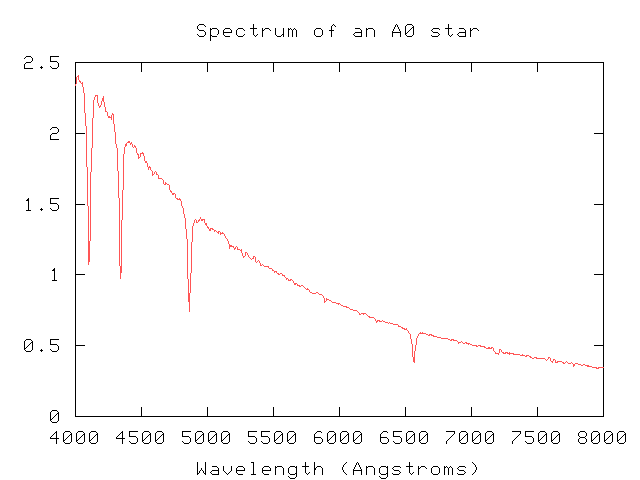The problems in this homework are all related to the discussions we had about light and it's primary properties of speed, 'color' or wavelength, and brightness. The tools that you will you include spectra and magnitude. Please refer back to the breadcrumbs for helpful clues.
1: Thunder and lightning: In class we used the speed of light waves (c = 3.108 m/s) and the speed of sound waves (vsound = 343 m/s) to figure out the rule the tells us how far away lightning is. Starting with a clear sketch reproduce that calculation and state your own version of the rule. Your statement of the rule should allow me to easily determine when lightning is 1 km (roughly 1/2 a mile) away.
2: What is the frequency of light that has a wavelength of 1 mm? Looking at the EM Spectrum on the breadcrumbs page is this a radio wave, ultraviolet, infrared, or a microwave?
3: What is the wavelength of an AM radio wave which has a frequency of 1150 kHz?
4: Are shortwave radio waves longer or shorter than AM radio waves? Explain your reasoning. You may have to do a web search to find out what typical short wave radio frequencies are.
5 (A), 6 (B), 7 (C): The following images shows the emission spectra for a number of elements and three unknown spectra. For each of the unknown spectra identify two or more elements that appear to be present. Describe the particular emission lines that convinced you of the presence of each element.

8: In the following spectrum of light (displayed as intensity relative to wavelength) there are 4 'dark' lines where significantly less light is seen. What are the wavelengths of those 4 dark bands. Convert Angstroms to nm and tell me if these dark lines are visible light, infrared, or ultraviolet.
9: This image of the Pleiades has a range of apparent magnitudes. Figure out what you think the order of brightness is for the 9 brightest stars in the image and match them to this list from Wikipedia. How did you do? Apparent brightness is not easy as I hope you found.


